Fashion, one of the most polluting industries
Many sources paint an alarming image. The fashion industry is the second most polluting industry in the world, surpassed only by the oil industry. Even though some are sceptical about the accuracy of this claim, one thing is sure. The fashion industry generates mountains of waste, toxic chemicals, water and soil pollution, greenhouse gasses, and it involves bad working conditions, unfair payments, abuse, and even child labour. What’s even more distressing is that almost half of the items produced worldwide are never worn. This leads to one garbage truck of textiles ending up in landfills or burned each second. So where exactly does the fashion industry stand when it comes to sustainability?
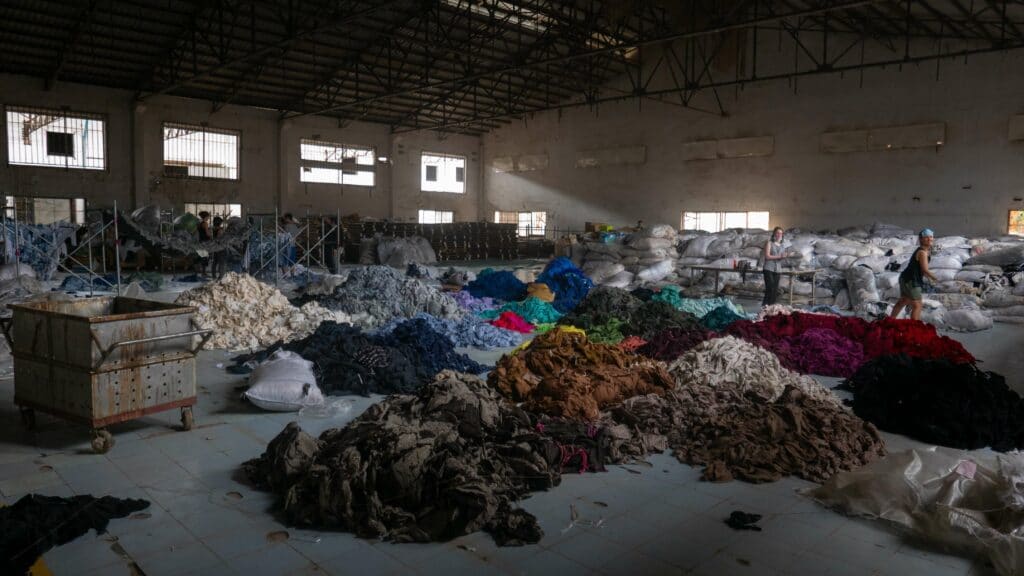
Table of Contents
The fashion industry’s toll on sustainability
Climate change is on trend
When talking about fashion, it makes sense to start with the challenge of our generation – climate change. The fashion industry is responsible for up to 10% of global greenhouse gas emissions. Maybe that sounds too abstract. Imagine then that, in 2018, the fashion industry produced more GHG emissions than France, Germany, and the United Kingdom combined.
If the industry does not undergo fast changes in the following years, it will continue steering at a long distance from the 1.5oC target of the Paris Agreement. By 2030, it will actually be as far as 50% from the target if the industry opts for maintaining business as usual.
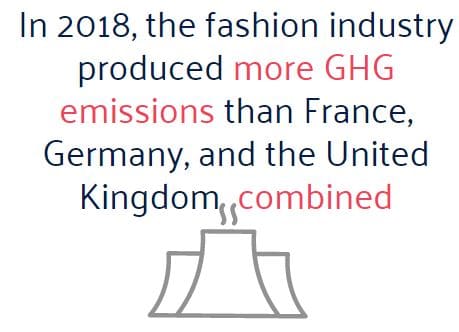
Plastic that we see
When thinking about what goes into our clothes, our mind usually goes to cotton. However, 65% of our clothing is plastic-based, as it uses materials like acrylic, nylon, and polyester. Each year, the clothing industry uses around 70 million barrels of oil to manufacture its polyester. This is enough for a medium-sized car to drive around the Earth almost 800,000 times. This oil consumption is linked to climate change, pollution, and resource reduction.
Polyester production for textiles generated about 706 billion kg of greenhouse gases in 2015, the same amount 185 coal power plants produce in one year.
Moreover, the industry uses large amounts of plastic for shipping the items. This stays away from the eyes of customers, who only see the nice in-store hangers. But imagine billions of garments arriving at stores on single-use plastic hangers and wrapped in plastic foil. That is why hangers have been called the plastic straws of the fashion industry. Part of this waste gets recycled, but most of it still ends up in landfills and our oceans.
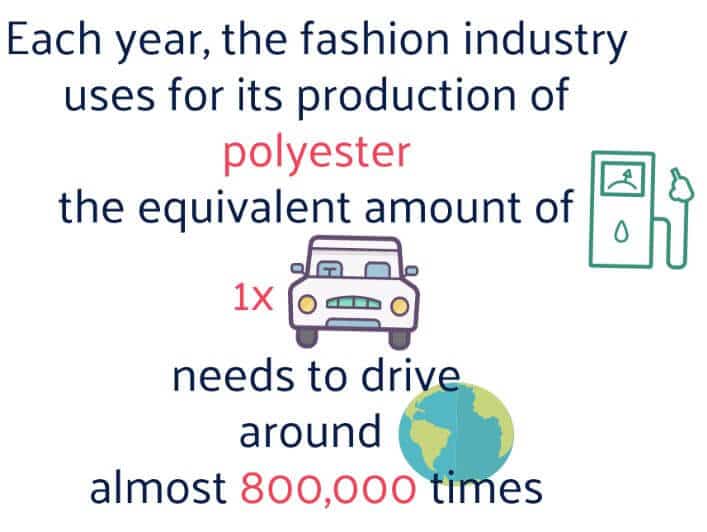
Plastic we don’t see
But it does not stop here. This plastic has a lust for travel, so every time we wash our clothes, small pieces called microplastics (or microbeads) escape them. From there, they end up in our rivers and oceans, but also in our food chain and the air we breathe.
There are a large amount of microplastics in the ocean, and 35% of it is due to the fashion industry. There are 500 times more microbeads in the ocean than the stars in our galaxy. As a result, we humans have the habit of eating a credit card worth of plastic every week without knowing it.
Microbeads are linked to health issues like hormonal cancers, reproductive problems, metabolic disorders, asthma, and neurodevelopmental conditions. Moreover, the flame retardants that microplastics hold can impede brain development in foetuses and children, while other elements can lead to cancer and bird defects.
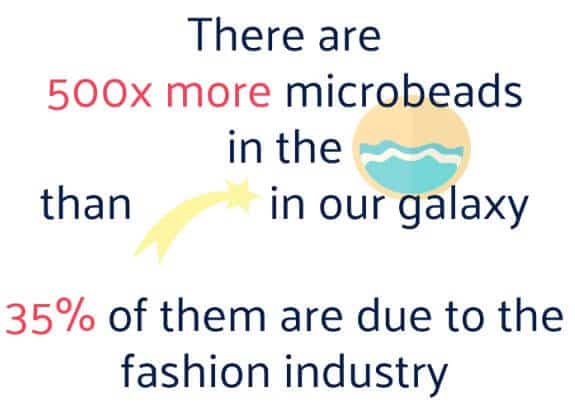
Water pollution and consumption
The clothing industry is a major source of water pollution throughout the value chain. The runoff from cotton fields transports the nutrients used as fertilisers to the nearby lakes and rivers. This causes eutrophication, leading to algal blooms. In time, this induces massive fish stock loss and affects biodiversity and the food system. It is not a pleasant sight either.
Later on, the dyeing process of clothes produces toxic chemicals. These are responsible for 17-20% of the world’s industrial water pollution. 72 toxic chemicals have been found in water from textile dyeing, almost half of which cannot be removed.
Moreover, the fashion industry has very big water footprint. In 2015, it consumed 79 billion cubic meters of water, enough to fill 32 million Olympic-size swimming pools.
It takes around 7,000 litres of water to produce one pair of jeans, the same amount one individual drinks in 5-6 years. A T-shirt requires 2,700 litres of water, enough for a person to keep thirst away for almost 3 years.
This is freshwater we are talking about, which accounts for less than 3% of Earth’s water. Most of it is trapped in glaciers, polar ice caps, atmosphere, and soil, leaving only 0.5% of the planet’s freshwater to be used.
“The water consumed to grow India’s cotton exports in 2013 would be enough to supply 85% of the country’s 1.24 billion people with 100 litres of water every day for a year. Meanwhile, more than 100 million people in India do not have access to safe water.” – Stephen Leahy, 2015, ‘World Water Day: the cost of cotton in water-challenged India’, The Guardian
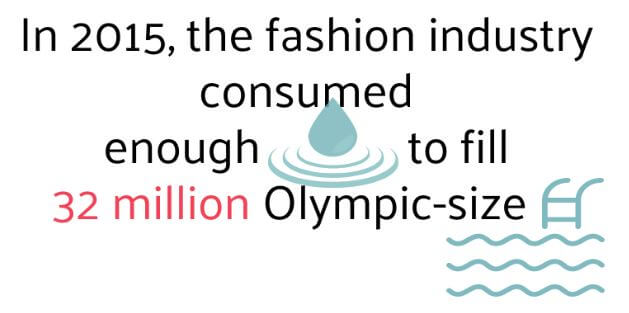
Soil degradation due to pesticide and insecticide pollution
Cotton covers just 2.5% of Earth’s agricultural land. However, its production requires 6% of the world’s pesticide use and 16% of insecticides, surpassing all other major crops.
These chemicals are little rebels, and they travel away from their original area by air, soil or water. Their effects on human health are far from appealing – cancer, nervous system diseases, reproductive problems, neurological disorders, asthma, and more.

Deforestation
Our precious forests are not safe from the activities of the fashion industry either. Fabrics like cellulose, viscose and rayon are made from wood pulp. It is estimated that the fashion industry is responsible for the cut of seventy million trees every year, and this figure is expected to double in the next 20 years.
Abuse, slavery, and sickness
What may be the darkest side of the clothing industry is well hidden from consumers’ sight, but affects millions of workers in unimaginable ways. They often have to work 14 to 16 hours a day, 7 days a week. Employees in countries like China, Bangladesh, and India work as much as 96 hours in a regular week and even longer during peak season.
Moreover, out of the 75 million factory workers the clothing industry employs, only 2% earn a living wage. Here, they face poor air conditions, high temperatures, toxic chemicals, and physical and verbal abuse.
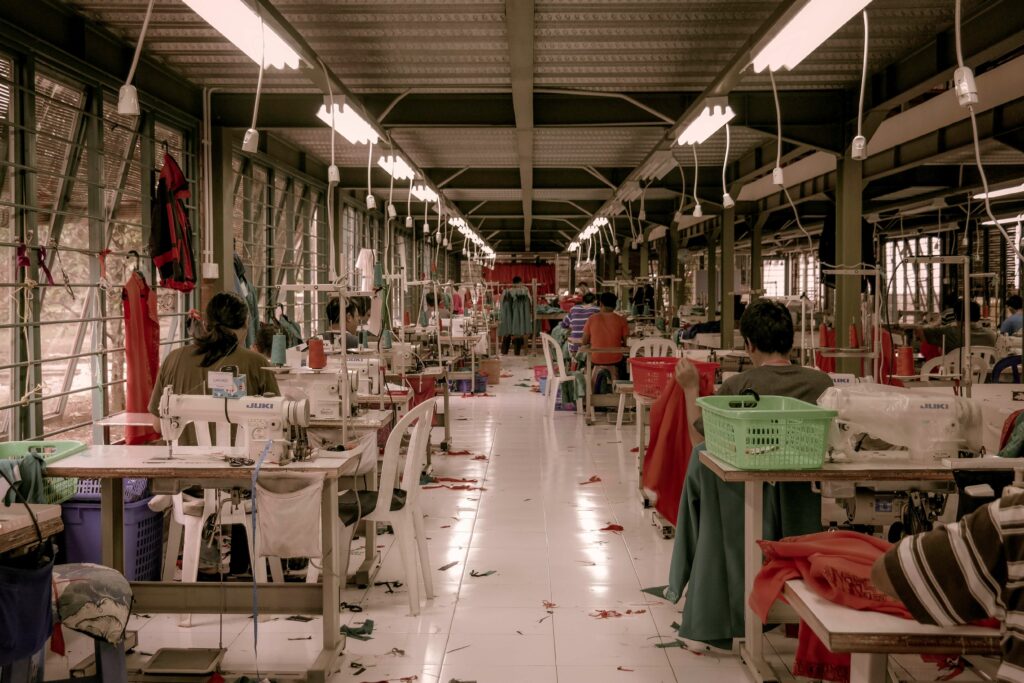
Part of these workers are children. Around 11% of the world’s children suffer the inconceivable conditions of child labour. That is 170 million children. Many of them work in the textile and garment industry.
“Slavery in the fashion world can appear in a variety of forms from harvesting the cotton for a t-shirt, spinning the fibre to yarn, sewing the garment and modelling the final product. The difference between slavery and extremely exploitative labour can be vague and the fashion industry walks a fine line.” – Ariel Clay, n.d., ‘Modern Day Slavery in the Fashion Industry’, FG Magazine
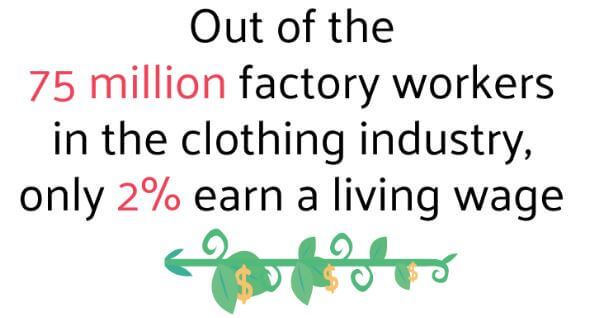
What can the fashion industry change for fostering sustainability?
Improving sustainability in the fashion industry is a massive challenge, but not an impossible one. Companies need to formulate ambitious and revolutionary sustainability strategies that move away from the destructive present practices. This is also crucial for securing a competitive advantage, as consumers demand more ethical clothing and focus on fashion sustainability. As the power of already established brands fades in the customers’ quest for sustainability, transparency and drastic changes are the best approaches the fashion industry can take.
More sustainable materials
A range of materials that could replace cotton already exists on the market. This includes organic hemp, bamboo, linen from flax plant, lyocell from eucalyptus or bamboo, and many more natural-derived fabrics.
They are better for the environment than cotton in the sense that they generally use less water, pesticides, and fertilisers. However, they still use high amounts of energy and manpower.

Organic cotton has also received a lot of attention in the past years. It is claimed not to use toxic chemicals, and some sources say that it is more sustainable than regular cotton because “it’s 46 percent less harmful to global warming, there’s 70 percent less acidification of land and water, the potential for soil erosion drops 26 percent, surface and groundwater use falls 91 percent and demand for energy could go down by as much as 62 percent” (Tara Donaldson, 2017, ‘Report: The Truth About Organic Cotton and its Impacts’, Sourcing Journal).
Recycled materials also have great potential due to their lower impact. This includes recycled cotton, recycled nylon (econyl), and recycled polyester. Upcycling plastic waste to produce clothes and shoes also became a practice that deserves attention. However, these still consist of plastic and come with disadvantages like producing microbeads, containing chemicals, and not being biodegradable.
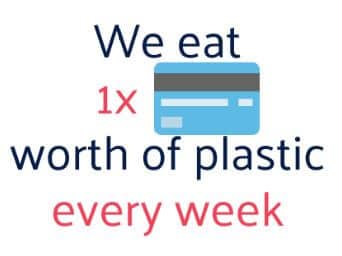
Less harmful technologies
Given the various spectrum of environmental issues generated by the fashion industry, there is a lot of room for improvement.
One example is the introduction of waterless dyeing technologies, which dramatically diminish water pollution and consumption during the dyeing process. These technologies also use much fewer chemicals and less energy than the classic alternative.
Another crucial aspect that must be changed is the type of energy the industry utilises. As it requires high amounts of energy, methods to reduce this consumption and a fast transition to renewable energy are key.
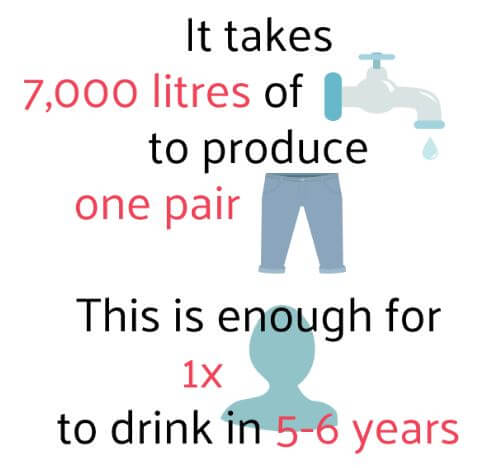
Certifications
Even though one should take certifications with a grain of salt, they are a good start for improvement.
When it comes to organic cotton, there are a few certifications that producers should focus on – Global Organic Textiles Standard, Soil Association Certification, OE100 Standard, and Fair Wear Foundation.
Other certifications and standards strive to ensure, among others, fair work conditions and payment (Fairwear Foundation, Fair Trade Certified), organic agricultural products (EcoCert), the absence of toxic chemicals (Oeko-Tex), and no usage of animal products (PETA Approved Vegan).
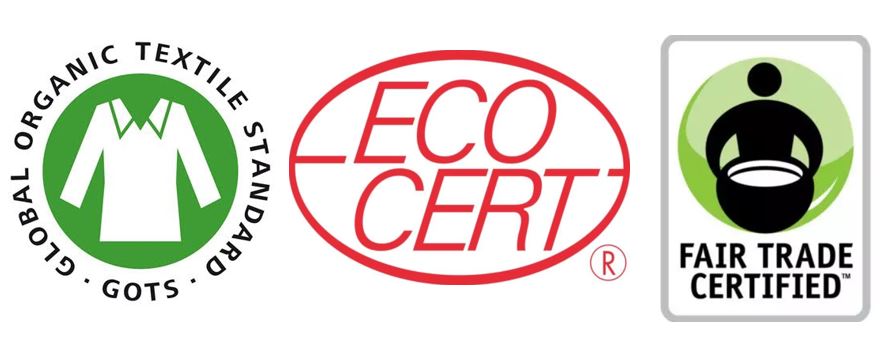
Circular economy, repair, redesign, upcycle
According to the Ellen MacArthur Foundation, some circular economy practices in the fashion industry involve subscription services, clothing rental, and peer-to-peer sharing. Moreover, clothing brands have already started taking small steps towards adopting a circular economy in the industry.
They implemented programs that collect used clothes that are later recycled for their materials, offer a second life to damaged clothes through repairing and redesigning and encourage buying & selling used clothes.
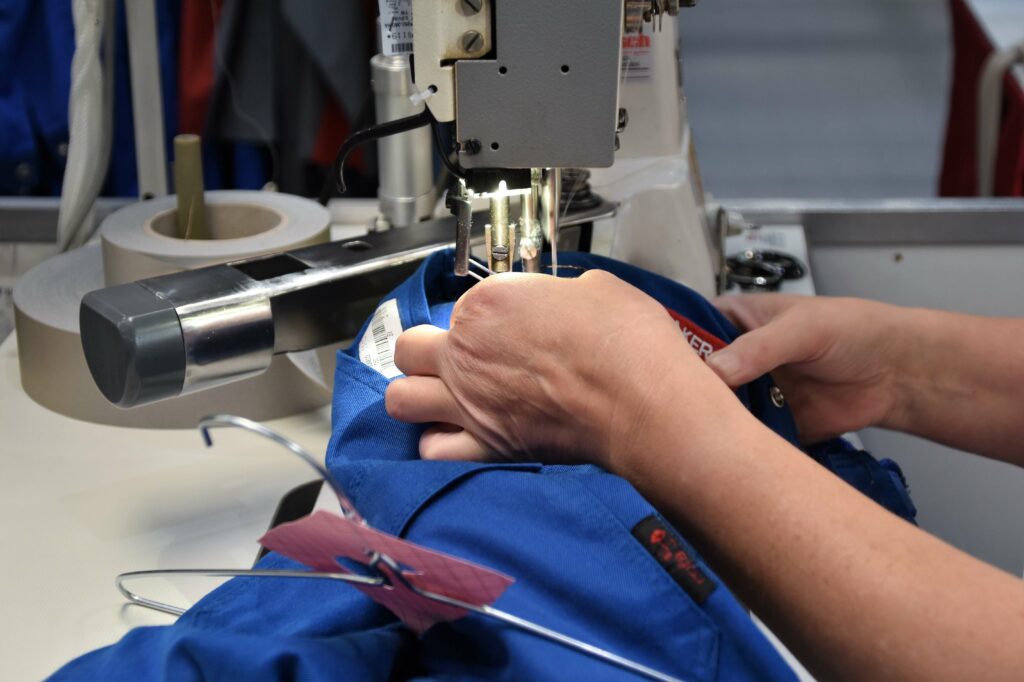
The Sustainable Apparel Coalition & Higg Index
The Sustainable Apparel Coalition was founded in 2010 and it brought together 250 stakeholders related to the fashion industry. They represent more than a third of the global clothing and footwear market.
The Coalition’s stakeholders are “leading apparel, footwear, and textile, brands, retailers, suppliers, service providers, trade associations, nonprofits, NGOs and academic institutions working to reduce the environmental and social impacts of products around the world.” (Provided by Sustainable Apparel Coalition, 2019, ‘Sustainable Apparel Coalition Appoints Amina Razvi as Executive Director’, PR Newswire)
It all started with Patagonia, well known for their sustainability initiatives, helping Walmart to reduce its impact. This unorthodox partnership attracted a lot of attention in the industry and it managed to create the Higg Index.
The Index is the main focus of The Sustainable Apparel Coalition. It incorporates a series of tools that brands and retailers can use to measure and score their sustainability level all through their value chains. In 2019, there were 14,000 facilities using the Higg Index.
If fashion companies transparently engage the Index, it has the potential to create a common ground for assessing and tackling environmental impact in the industry. The Higg Index is a strong tool for the companies’ sustainability strategies and it represents a powerful step towards addressing the environmental degradation generated by the fashion industry.
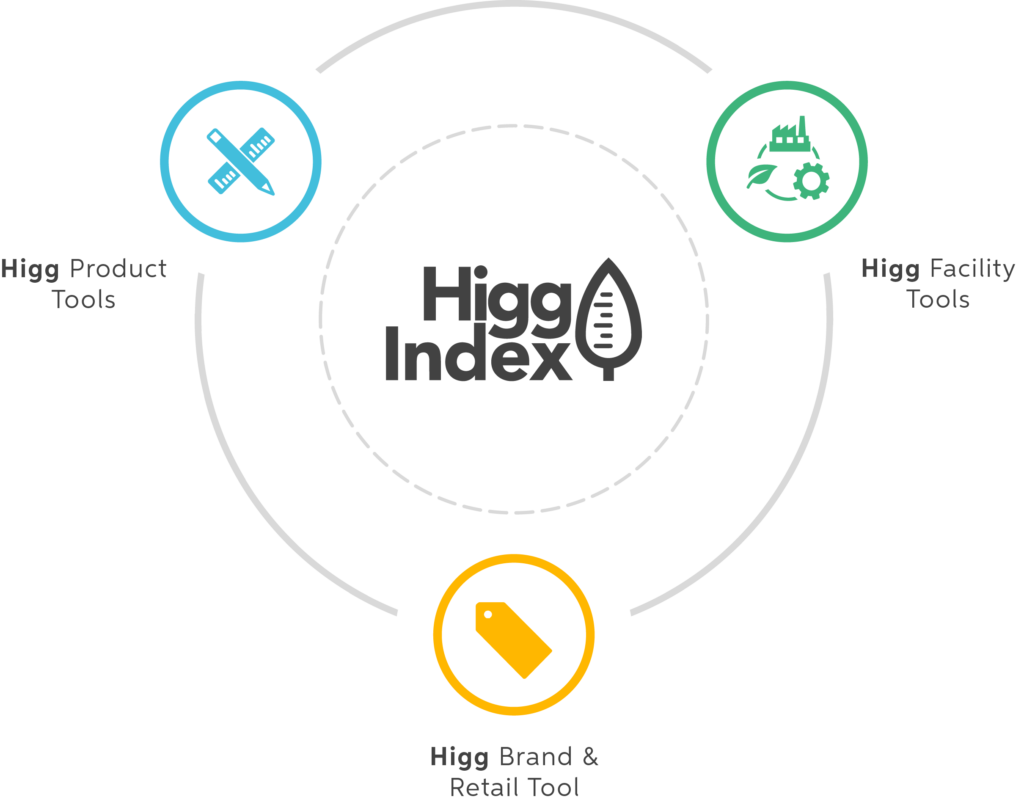
The Fashion Pact
The Fashion Pact was created and presented in 2019 to heads of state during the G7 meeting at Biarritz, and it’s the first of its kind in the industry. CEOs of over 60 global leading companies from the fashion and textile industry, together representing one-third of the fashion industry, adhered to this coalition.
The signatories vouched to implement sustainability KPIs in three areas: mitigating climate change, restoring biodiversity, and protecting the oceans.
However, as the contents of the Pact are non-binding, brands need to prove that this is more than a marketing strategy. They must provide transparent efforts and well-researched changes if the Pact is to make a difference.

Sustainability involves moving away from fast fashion
There is no way to sugar coat this – the overconsuming fast fashion industry can never call itself truly sustainable.
The way the fast fashion industry operates opposes the environmental and social sustainability pillars. Of course, fast fashion can and does take steps towards lower impacts. But that is simply not enough to make it sustainable. The use of organic cotton and recycled materials is laudable, but it’s nowhere close to tackling consequences like climate change, pollution, and inhumane work conditions.
A big part of consumers will continue demanding cheap fashion articles over sustainable ones. However, in time the consumer trends will change and companies that do not start making changes now will fall behind. Fast fashion companies should address their impact and take steps towards lowering them.
If fashion is ever to become sustainable, it needs to build on values like conscious and slow consumption, long-term garment quality, and circular economy.
“Fast fashion is the SUV of the fashion industry. It will never be sustainable.” – Viola Wohlgemuth, cited by Jeanette Cwienk, 2020, ‘How sustainable are ‘eco’ brand high street fashions?’, DW
What can we do as consumers?
This is a question we should always ask ourselves when it comes to our choices. Fortunately, there are many things we can change in our behaviour to focus on sustainability when it comes to purchasing fashion items.
Change the consumerist mindset
In one of her songs, Lily Allen memorably says: “I am a weapon of massive consumption / And it’s not my fault, it’s how I’m programmed to function.”
The song is a satire on consumerism. We are used to shopping ‘for fun’ or buying a $2 T-shirt when we’ve had a bad day. Just because it makes us feel better.

The compulsion to buy completely useless things can even be a psychological condition. Oniomania, or shopping addiction, is a real issue, defined as “a behavioural addiction that involves compulsive buying as a way to feel good and avoid negative feelings, such as anxiety and depression.” (Elizabeth Hartney, 2020, ‘An Overview of Shopping Addiction’, Verywell Mind).
But before accepting your fate as a compulsive shopaholic, try to understand why you feel this urge in the first place. It may be our strange society values that put excessive emphasis on the way we look and dress or even a bad state of mind that comes from different aspects of your life. Shopping will not solve any of those.
Should we consider compulsive buying?
We really must reconsider impulsive buying. Some sources say that more than half of the clothes purchased worldwide are never worn. Every 10 minutes, the UK throws to the landfill 20,000 clothing items, while Australia gets rid of 6,000 kg of clothes. In one year, the US produce 16 million tons of textile waste, of which 10 million ends up in the landfill.
This is not only waste of resources and an unnecessary creation of pollution, toxic chemicals, and poor livelihoods of workers. Clothes that end up in the landfill can take over 200 years to degrade. During this time, they produce methane, a very potent greenhouse gas, and leach toxic chemicals and dyes into the groundwater and our soil.
Avoid fast fashion
The majority of this waste is the result of fast fashion. The price paid by the consumer may be (suspiciously) cheap, but the environmental and social costs of fast fashion are bad. Let’s brush up on some of them:
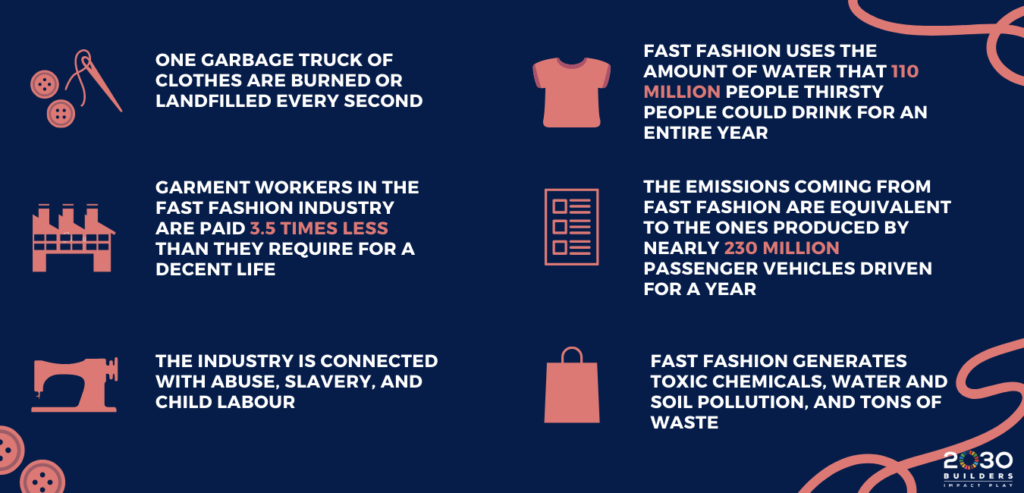
So next time you feel the symptoms of shopping fever, remember at least one of these facts. Hopefully, that will be enough to see the real ugliness behind the beautifully coloured garments.
Other essential steps to diminish our impact
There are many other habits we consumers can build to address the environmental and social impacts of the fashion industry.
Buy better quality clothes that will last much longer
In time, the investment will pay off. Realistically, filling your closet with cheap items will give you the illusion of having more choices, but you will still end up wearing the same clothes regularly.
Research and invest in sustainable fashion brands
Look for the environmental and social approaches of the brands you buy. An example of a tool to support you on this is the Good on You app. You can also opt for the more environmentally-friendly materials mentioned above and choose items produced in countries where environmental and work regulations are stricter, like the EU, Canada, and the US.
Purchase second-hand items
It’s long since buying used items was seen as distasteful. With the rise of vintage fashion, second-hand stores have become a goldmine for consumers wanting a cheaper and more sustainable options.
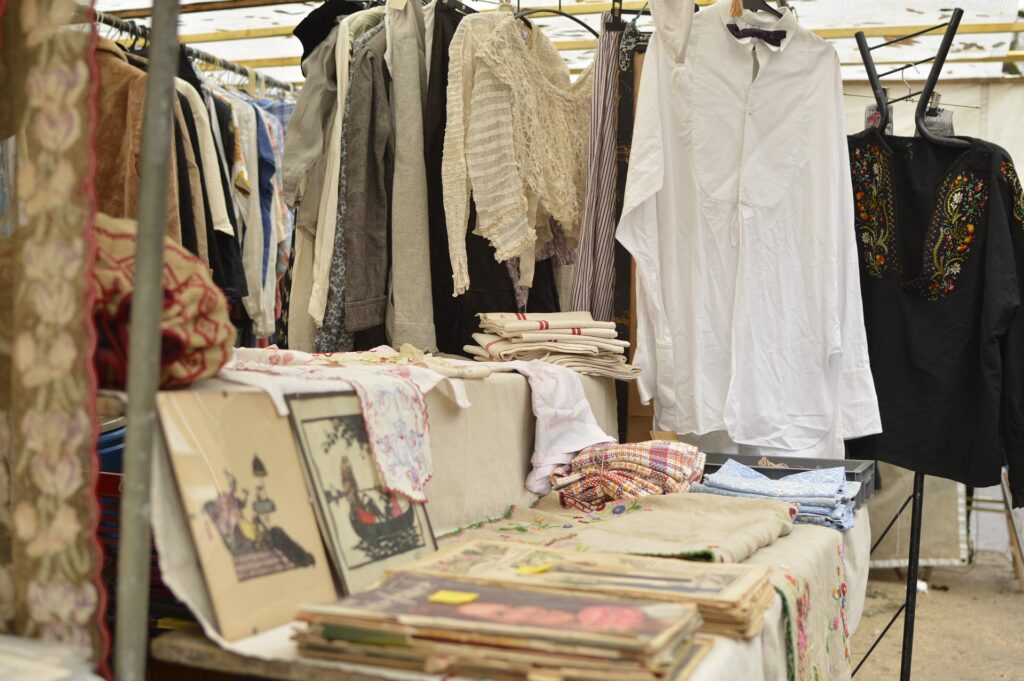
Repair and Upcycle
If you are not handy with a needle or sewing machine, take your clothes to a tailor or look for clothing companies that can help (some of them even do it for free sometimes). Moreover, take advantage of the items that are beyond repair and put your creativity to work. You can transform your old garments into new pieces of clothing, bags, cloth napkins, or use them for cleaning. The sky is the limit!
Clothing swaps
Participate in clothes swaps or do one with your friends. If it is not an option in your area, consider starting one, it can be really fun and will bring your community together.
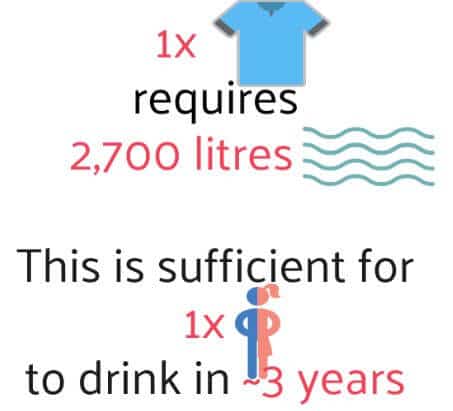
Sell or donate your unwanted items
However, be mindful of the way you do it and ensure the articles reach a person that will take advantage of them. You can sell or donate them using local websites and apps, Facebook groups, or give them away to a homeless shelter.
Due to our insatiable craving for new clothes, charities receive way more than they can handle. A lot of the items are unusable due to their poor state. As a result, a quarter of donated items go directly to the landfill, while an additional 40-50% is exported into the global second-hand clothing trade. From here, a lot don’t reach any person in need but end up buried or burned.
Recycle properly
If all of the above failed, take your surplus items to the local recycling centre or textile recycling facilities, where you are sure they will be managed correctly.
Do you focus on sustainability when you go shopping? What could fashion brands do better to cater to your needs?
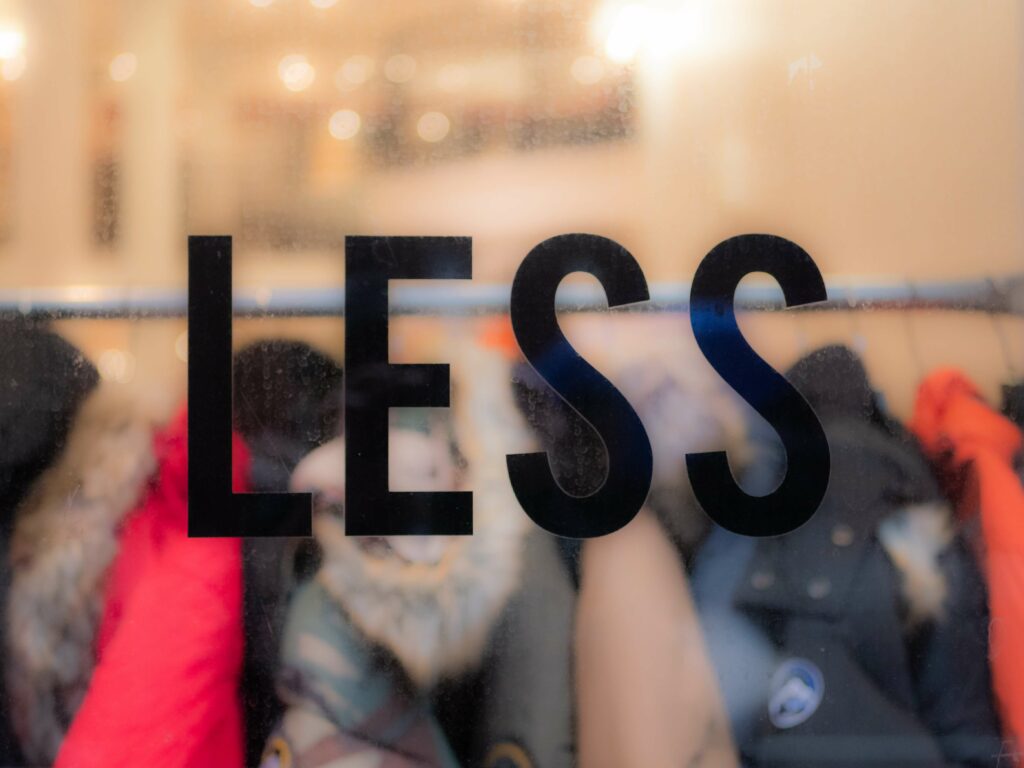




0 Comments